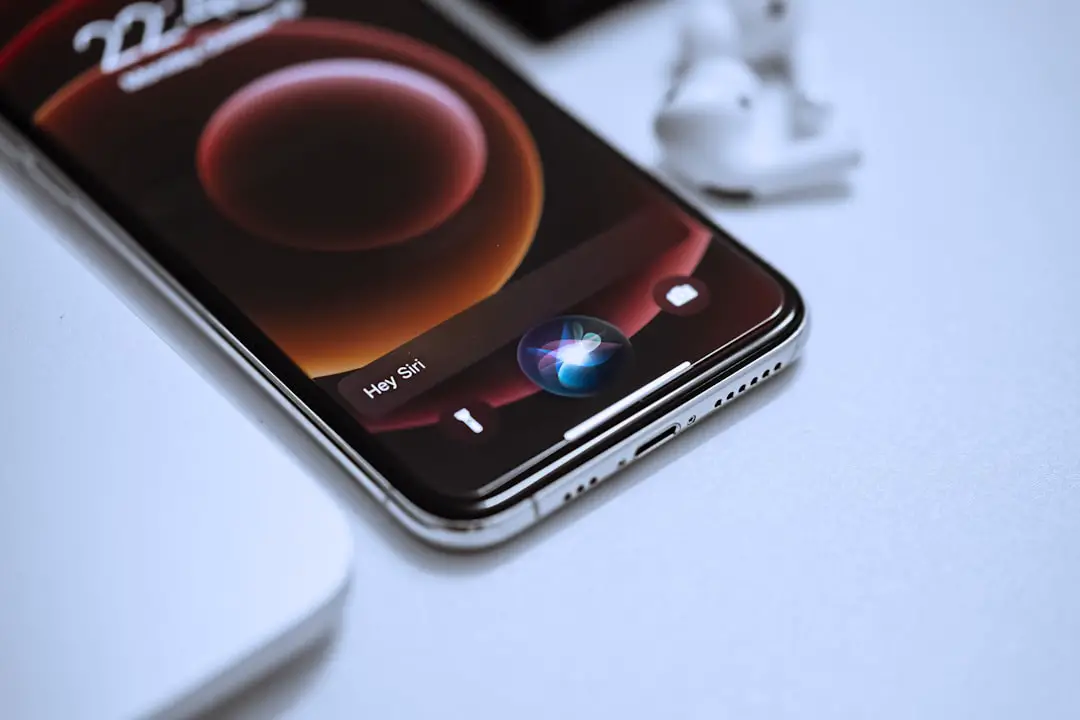In an era where smartphones have become an integral part of our daily lives, the security of these devices is paramount. The iPhone, developed by Apple, is renowned for its robust security features, which are designed to protect users from various threats. With millions of users worldwide, the iPhone has become a prime target for cybercriminals seeking to exploit vulnerabilities.
Understanding the intricacies of iPhone security is essential for users who wish to safeguard their personal information and maintain their privacy in an increasingly digital world. Apple has implemented a multi-layered security architecture that includes hardware-based security features, secure software design, and regular updates. The iPhone’s operating system, iOS, is built with security in mind, incorporating features such as encryption, secure boot processes, and app sandboxing.
However, despite these advanced measures, no device is entirely immune to threats. Users must remain vigilant and informed about potential risks and best practices to ensure their iPhones remain secure.
Key Takeaways
- iPhone security is crucial in protecting your personal data and privacy.
- Common ways iPhones can be hacked include malware, phishing scams, and using public Wi-Fi networks.
- Jailbreaking your iPhone can expose it to security vulnerabilities and compromise its safety.
- Strong passwords and biometric security measures are essential in safeguarding your iPhone.
- Recognizing and avoiding phishing scams is important to prevent unauthorized access to your iPhone.
Common ways iPhones can be hacked
While iPhones are generally considered secure, they are not impervious to hacking attempts. One common method employed by cybercriminals is through phishing attacks, where users are tricked into providing sensitive information by deceptive emails or messages that appear legitimate. These attacks can lead to unauthorized access to personal accounts, including email and banking information.
Cybercriminals often use social engineering tactics to manipulate users into clicking on malicious links or downloading harmful attachments. Another prevalent method of hacking involves exploiting vulnerabilities in software or applications. Although Apple regularly updates iOS to patch known vulnerabilities, there are instances where hackers discover new exploits before they can be addressed.
For example, zero-day vulnerabilities can be particularly dangerous as they are unknown to the software developers and can be used to gain unauthorized access to the device. Additionally, malware can be introduced through compromised apps or websites, further increasing the risk of hacking.
The risk of jailbreaking your iPhone

Jailbreaking is the process of removing software restrictions imposed by Apple on iOS devices. While it may seem appealing to gain access to additional features and customization options, jailbreaking significantly compromises the security of an iPhone. By bypassing Apple’s built-in security measures, users expose their devices to a myriad of risks, including malware infections and unauthorized access to sensitive data.
Once an iPhone is jailbroken, it becomes vulnerable to malicious apps that can be downloaded from unofficial sources. These apps may not undergo the rigorous vetting process that Apple employs for apps in the App Store, making it easier for harmful software to infiltrate the device. Furthermore, jailbreaking can lead to instability in the operating system, resulting in crashes and performance issues.
Users who choose to jailbreak their devices must weigh the potential benefits against the significant security risks involved.
The importance of strong passwords and biometric security
| Metrics | Strong Passwords | Biometric Security |
|---|---|---|
| Security Level | High | Very High |
| User Convenience | Medium | High |
| Complexity | Can be complex | Highly complex |
| Authentication Speed | Depends on complexity | Very fast |
| Cost | Low | High |
One of the most effective ways to protect an iPhone from unauthorized access is through the use of strong passwords and biometric security features. A strong password should be complex, incorporating a mix of uppercase and lowercase letters, numbers, and special characters. Avoiding easily guessable information such as birthdays or common words is crucial in creating a robust password that can withstand brute-force attacks.
In addition to traditional passwords, Apple has integrated biometric security features such as Face ID and Touch ID into its devices. These technologies provide an added layer of protection by requiring users to authenticate their identity through facial recognition or fingerprint scanning. Biometric security not only enhances convenience but also significantly reduces the likelihood of unauthorized access.
However, users must remain cautious about sharing their devices with others, as this could compromise the effectiveness of these security measures.
How to recognize and avoid phishing scams
Phishing scams have become increasingly sophisticated, making it essential for iPhone users to recognize the signs of such attacks. One common tactic involves emails or messages that appear to come from reputable sources, such as banks or online services. These communications often contain urgent requests for personal information or prompts to click on links that lead to fraudulent websites designed to steal credentials.
To avoid falling victim to phishing scams, users should scrutinize any unsolicited messages carefully. Checking the sender’s email address for discrepancies or looking for grammatical errors in the message can help identify potential scams. Additionally, users should refrain from clicking on links or downloading attachments from unknown sources.
Instead, it is advisable to navigate directly to official websites by typing the URL into a browser rather than following links provided in emails or messages.
The dangers of using public Wi-Fi networks

Public Wi-Fi networks are convenient but pose significant security risks for iPhone users. Cybercriminals often set up rogue Wi-Fi hotspots that mimic legitimate networks, tricking unsuspecting users into connecting. Once connected, attackers can intercept data transmitted over the network, potentially gaining access to sensitive information such as passwords and credit card numbers.
To mitigate these risks, users should avoid accessing sensitive accounts or conducting financial transactions while connected to public Wi-Fi networks. Utilizing a Virtual Private Network (VPN) can provide an additional layer of security by encrypting internet traffic and masking the user’s IP address. Furthermore, disabling automatic connections to Wi-Fi networks can prevent devices from inadvertently connecting to potentially dangerous hotspots.
The role of software updates in iPhone security
Regular software updates play a crucial role in maintaining the security of an iPhone. Apple frequently releases updates that address known vulnerabilities and enhance overall device performance. Failing to install these updates can leave devices exposed to threats that have already been mitigated in newer versions of iOS.
Users should enable automatic updates on their devices to ensure they receive the latest security patches promptly. Additionally, it is advisable to periodically check for updates manually, especially if there are concerns about potential vulnerabilities. By staying current with software updates, users can significantly reduce their risk of falling victim to cyberattacks that exploit outdated software.
The potential risks of third-party apps
While the App Store provides a curated selection of applications that have undergone rigorous vetting by Apple, third-party apps obtained from unofficial sources can pose significant risks. These apps may contain malware or other harmful components that can compromise device security and user privacy. Once installed, malicious apps can access sensitive data stored on the device or even take control of its functions.
Users should exercise caution when considering third-party apps and prioritize downloading applications only from trusted sources. Reading reviews and checking app permissions before installation can help identify potential red flags. Additionally, regularly reviewing installed apps and removing any that are no longer needed can help minimize exposure to potential threats.
How to protect your iPhone from hacking
Protecting an iPhone from hacking requires a proactive approach that encompasses various strategies. First and foremost, users should enable two-factor authentication (2FA) for their accounts whenever possible. This additional layer of security requires a second form of verification beyond just a password, making it significantly more difficult for unauthorized individuals to gain access.
Moreover, users should regularly review their privacy settings and permissions for apps installed on their devices. Limiting access to sensitive information such as location data or contacts can help safeguard personal information from potential misuse. Utilizing built-in features like “Find My iPhone” can also aid in recovering lost or stolen devices while providing options for remotely wiping data if necessary.
What to do if you suspect your iPhone has been hacked
If a user suspects that their iPhone has been hacked, immediate action is essential to mitigate potential damage. The first step is to change passwords for all accounts accessed on the device, prioritizing email and banking accounts due to their sensitivity. Enabling two-factor authentication on these accounts can further enhance security during this critical time.
Next, users should check for any unauthorized apps or unusual behavior on their devices. If suspicious activity is detected, uninstalling any unfamiliar applications and restoring the device from a previous backup may be necessary. In severe cases where data breaches are suspected, contacting Apple Support or local authorities may be warranted for further assistance.
staying vigilant in protecting your iPhone
In conclusion, maintaining the security of an iPhone requires ongoing vigilance and awareness of potential threats. By understanding common hacking methods and implementing best practices such as using strong passwords, recognizing phishing scams, and avoiding public Wi-Fi networks, users can significantly reduce their risk of falling victim to cyberattacks. Regularly updating software and being cautious with third-party apps further enhances device security.
Ultimately, staying informed about emerging threats and adopting proactive measures will empower users to protect their personal information effectively. As technology continues to evolve, so too must our approach to security—ensuring that our devices remain safe in an ever-changing digital landscape.
There have been concerns about the security of iPhones and whether someone can hack into them. According to a recent article on getiphoneinfo.com, it is important to be aware of the privacy policy and terms and conditions of using an iPhone to protect against potential hacking attempts. It is crucial to stay informed and take necessary precautions to safeguard personal information stored on your device.
FAQs
What are the potential risks of someone hacking into your iPhone?
There are several potential risks if someone hacks into your iPhone, including unauthorized access to your personal information, financial data, and sensitive communications. They may also be able to track your location, monitor your online activity, and even remotely control your device.
How can someone hack into an iPhone?
There are various methods that hackers can use to gain access to an iPhone, including phishing attacks, malware, exploiting software vulnerabilities, and using public Wi-Fi networks to intercept data. Additionally, physical access to the device can also make it easier for someone to hack into an iPhone.
What steps can I take to protect my iPhone from being hacked?
To protect your iPhone from being hacked, you can take several steps such as keeping your device’s software up to date, using strong and unique passwords, enabling two-factor authentication, being cautious of suspicious links and attachments, and avoiding connecting to unsecured Wi-Fi networks.
Can someone hack into my iPhone remotely?
Yes, it is possible for someone to hack into an iPhone remotely, especially if the device has security vulnerabilities or if the user falls victim to a phishing attack. Remote hacking can allow unauthorized access to the device’s data and functions without physical access to the iPhone.
What should I do if I suspect that my iPhone has been hacked?
If you suspect that your iPhone has been hacked, you should immediately change your Apple ID password, enable two-factor authentication, update your device’s software, and run a security scan for malware. It is also advisable to contact Apple Support for further assistance.










